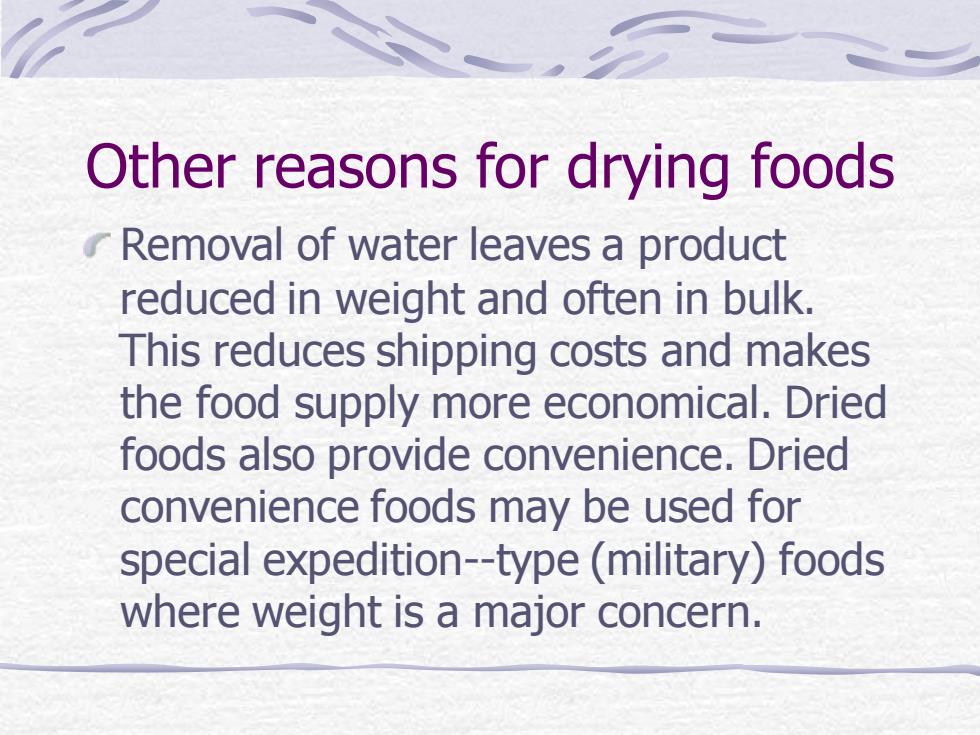
Other reasons for drying foods Removal of water leaves a product reduced in weight and often in bulk. This reduces shipping costs and makes the food supply more economical. Dried foods also provide convenience. Dried convenience foods may be used for special expedition-type (military) foods where weight is a major concern
Other reasons for drying foods Removal of water leaves a product reduced in weight and often in bulk. This reduces shipping costs and makes the food supply more economical. Dried foods also provide convenience. Dried convenience foods may be used for special expedition-type (military) foods where weight is a major concern
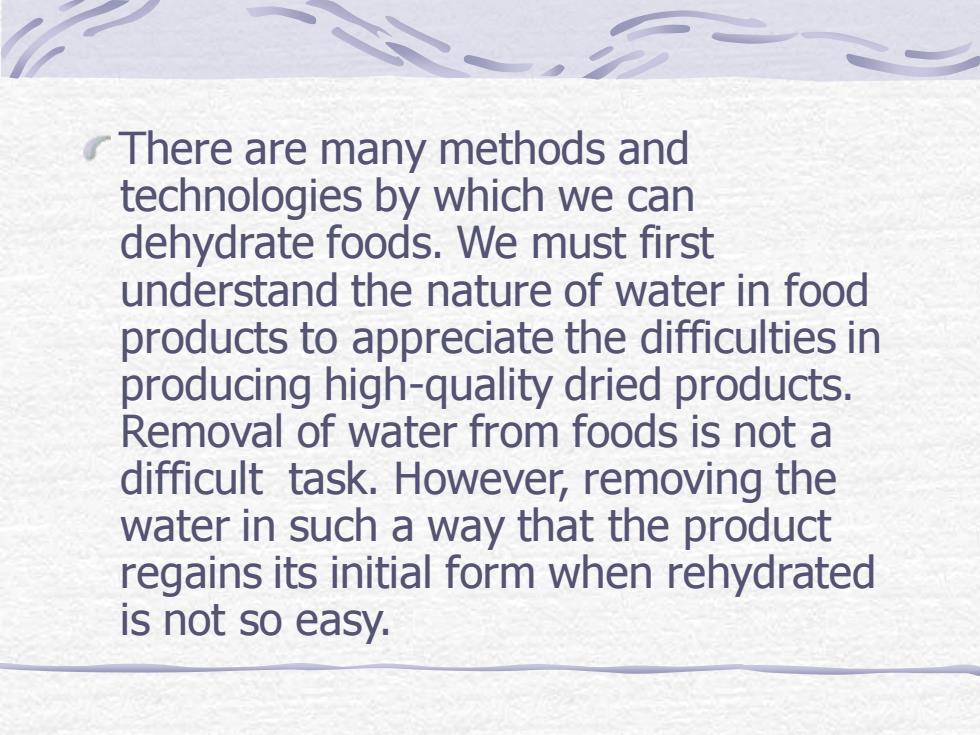
There are many methods and technologies by which we can dehydrate foods. We must first understand the nature of water in food products to appreciate the difficulties in producing high-quality dried products. Removal of water from foods is not a difficult task. However, removing the water in such a way that the product regains its initial form when rehydrated is not so easy
There are many methods and technologies by which we can dehydrate foods. We must first understand the nature of water in food products to appreciate the difficulties in producing high-quality dried products. Removal of water from foods is not a difficult task. However, removing the water in such a way that the product regains its initial form when rehydrated is not so easy
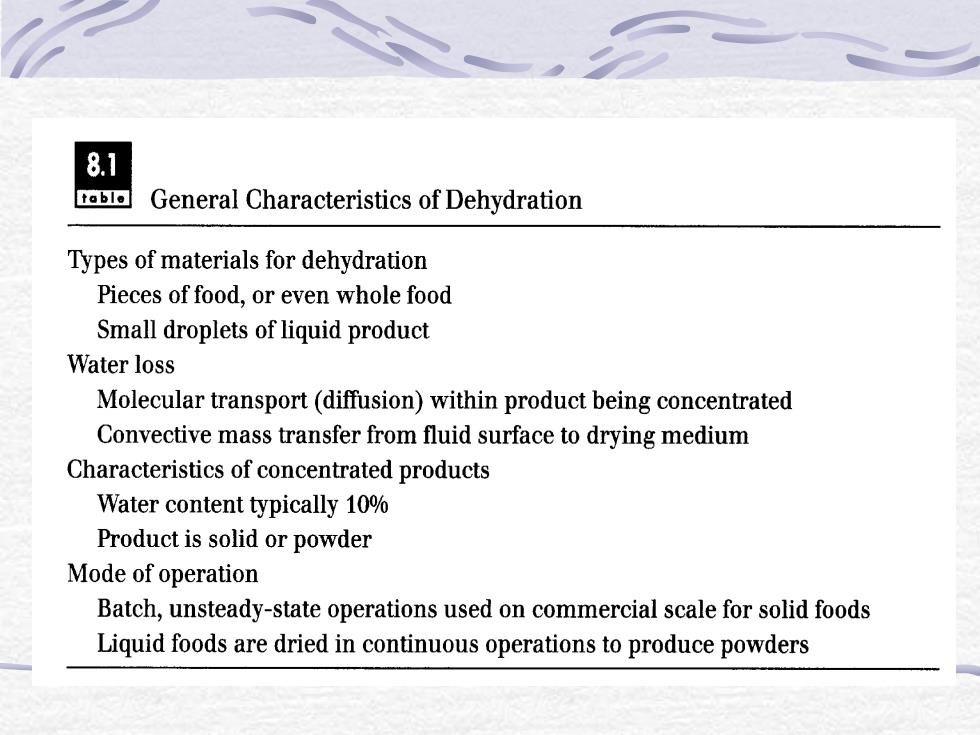
8.1 tabl回 General Characteristics of Dehydration Types of materials for dehydration Pieces of food,or even whole food Small droplets of liquid product Water loss Molecular transport(diffusion)within product being concentrated Convective mass transfer from fluid surface to drying medium Characteristics of concentrated products Water content typically 10% Product is solid or powder Mode of operation Batch,unsteady-state operations used on commercial scale for solid foods Liquid foods are dried in continuous operations to produce powders
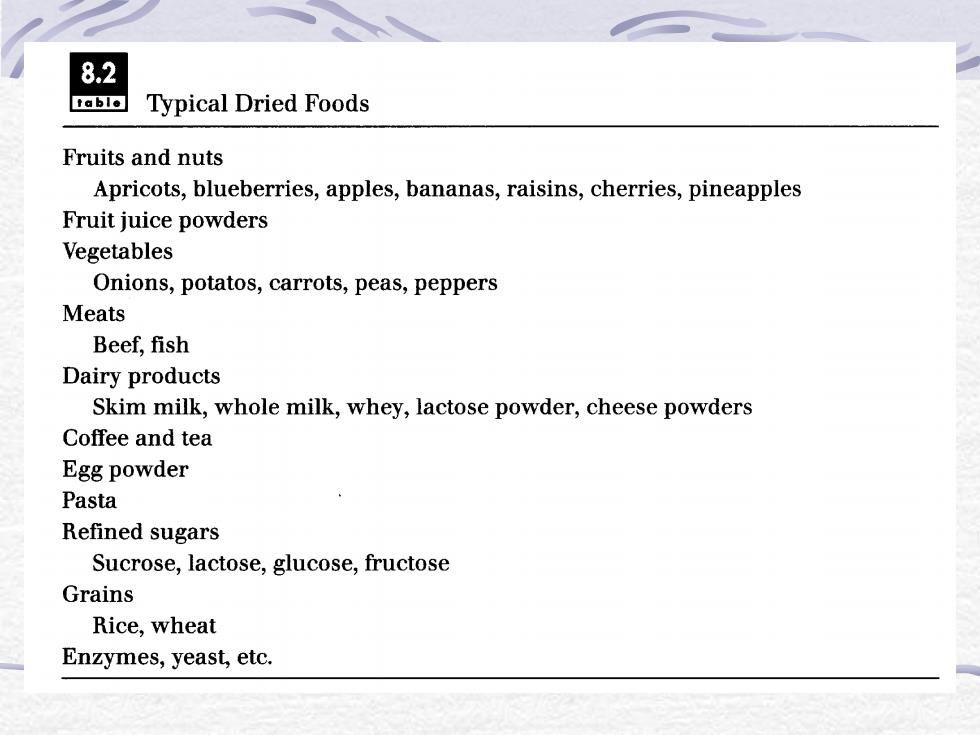
8.2 table Typical Dried Foods Fruits and nuts Apricots,blueberries,apples,bananas,raisins,cherries,pineapples Fruit juice powders Vegetables Onions,potatos,carrots,peas,peppers Meats Beef,fish Dairy products Skim milk,whole milk,whey,lactose powder,cheese powders Coffee and tea Egg powder Pasta Refined sugars Sucrose,lactose,glucose,fructose Grains Rice,wheat Enzymes,yeast,etc
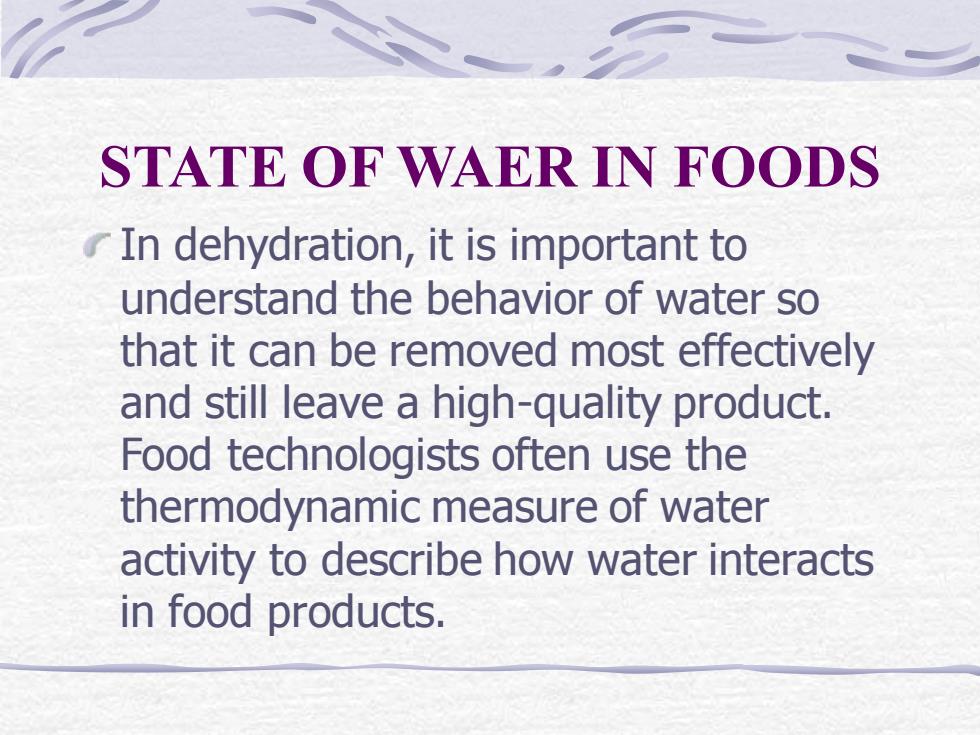
STATE OF WAER IN FOODS In dehydration, it is important to understand the behavior of water so that it can be removed most effectively and still leave a high-quality product. Food technologists often use the thermodynamic measure of water activity to describe how water interacts in food products
STATE OF WAER IN FOODS In dehydration, it is important to understand the behavior of water so that it can be removed most effectively and still leave a high-quality product. Food technologists often use the thermodynamic measure of water activity to describe how water interacts in food products